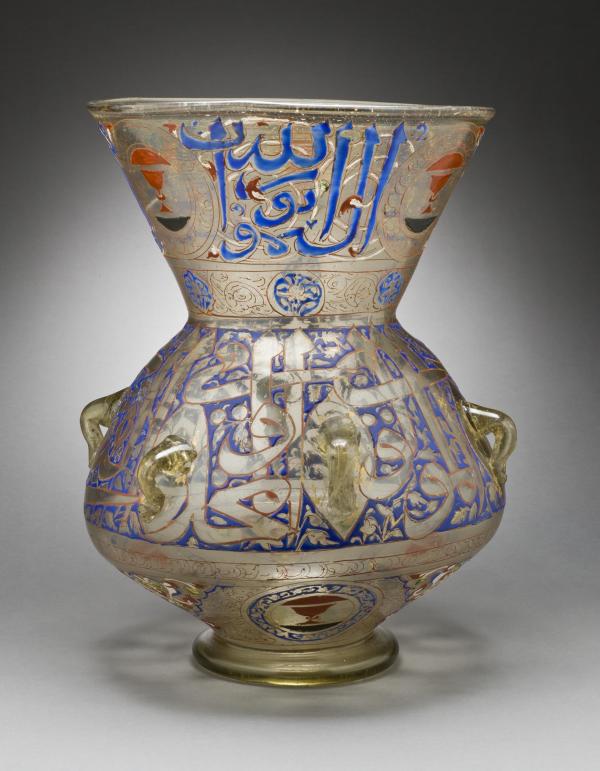Museums decide to tour their collections for a variety of reasons, including the goal of making their holdings better known by sharing them more broadly, especially with audiences that would otherwise not have access to such material. On a more practical level, parts of the collection also may be loaned out in order to renovate existing gallery space, or so that never-before-shown works from storage might be exhibited in place of those that are traveling. For all of these reasons, LACMA’s Islamic collection will soon be heading off on a long journey, beginning in Santiago, Chile, in early 2015, in an exhibition titled Earthly and Divine: Islamic Arts of the 7th–19th Centuries.
From its origins in the 7th century, Islamic art has always skillfully fused the earthly and the divine, the everyday and the extraordinary, the recurrent and the inimitable. Regardless of the rarity or ordinariness of their materials, the secular or religious nature of their functions, and the greater or lesser status of their intended owners, there is always a little bit of the divine in such earthly objects.

These objects of desire largely define the material culture of the ruling elite and privileged classes in the Islamic world, during a period stretching well over a millennium and in an area extending from southern Spain to western Central Asia. Brilliantly glazed ceramics and tiles, enameled and gilded glass, inlaid metalwork, carved wood and stone, and sumptuous woven textiles all absorbed the creative energies of artists, becoming highly developed art forms. Such works of art were for the most part portable, so portable in fact that the vast majority has long since been removed from an original context. Their portability also will enable them to travel from Los Angeles to Latin America and beyond.

Although this was largely a curatorial decision, I must confess I am starting to feel the beginnings of separation anxiety. During my time at LACMA, I have had the great pleasure of helping the collection to grow in size, stature, and scope. In 2002 we acquired approximately 750 works of art from a private collector, making our collection of Islamic art one of the most significant in the world; in 2006 we began acquiring contemporary art of the Middle East within the context of our historical collection, so that today we have perhaps the largest such collection of any American museum. While approximately 200 highlights from the historical collection are traveling, we will have the opportunity to show some of our previously unseen contemporary art of the Middle East. Whether in Los Angeles or touring in exhibitions, I tend to think of the works of art in our collection—both historical and contemporary—as ambassadors representing the Islamic world. I believe that as such they can help to mediate between East and West, allowing us to recognize our shared humanity.
Clearly sending our Islamic collection on the road is win-win-win, and while I have other museum projects in process to keep me busy, I am going to miss my objects. Walking through the galleries never fails to remind me how lucky I am to have found something that so thoroughly engages me intellectually, visually, and emotionally, and to be able to share this passion with others here in LA and now elsewhere. The galleries will close October 20. Please come and say goodbye . . . for now.
Earthly and Divine: Islamic Arts of the 7th–19th Centuries from the Los Angeles County Museum of Art opens January 15, 2015, at the Centro Cultural Palacio de la Moneda, Santiago.
Islamic Art Now: Contemporary Art from the Middle East—Part One opens at LACMA on January 31 (Ahmanson Building, Level 4)






